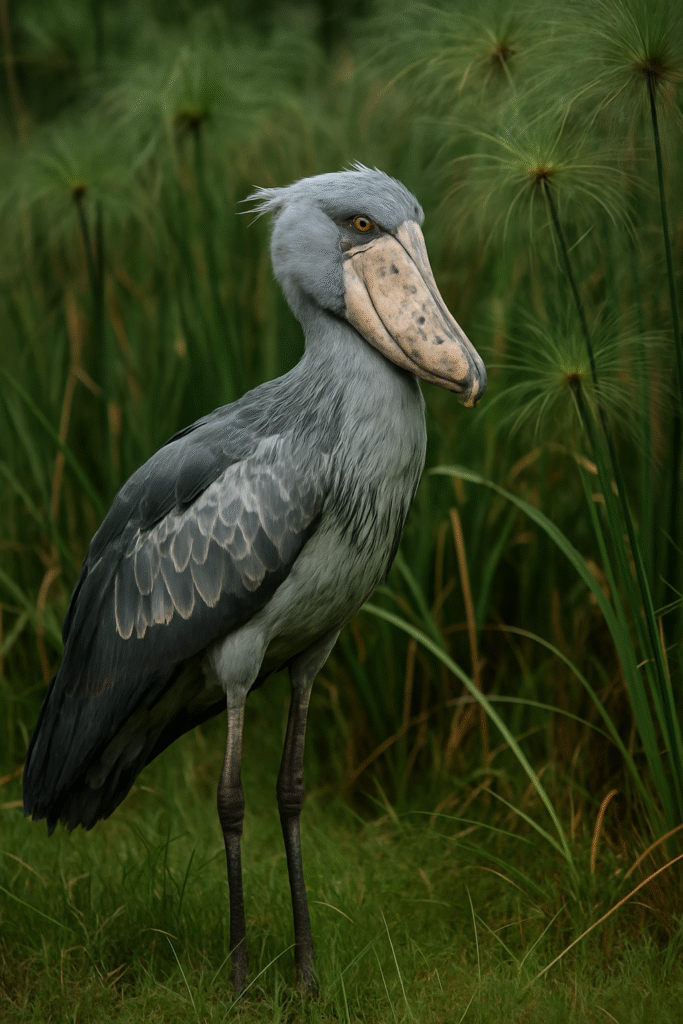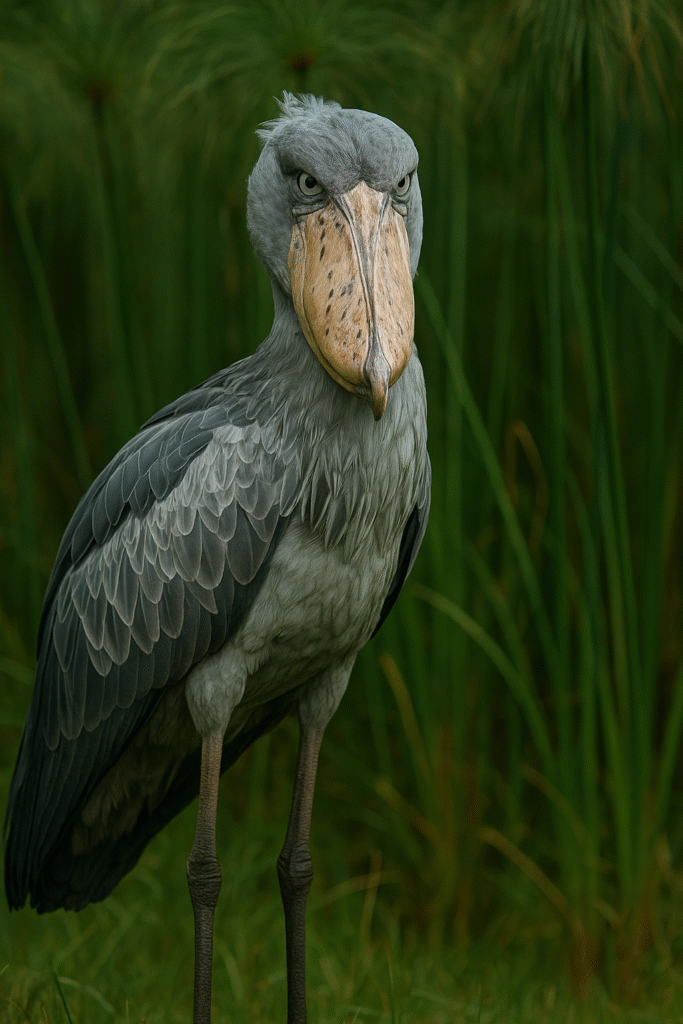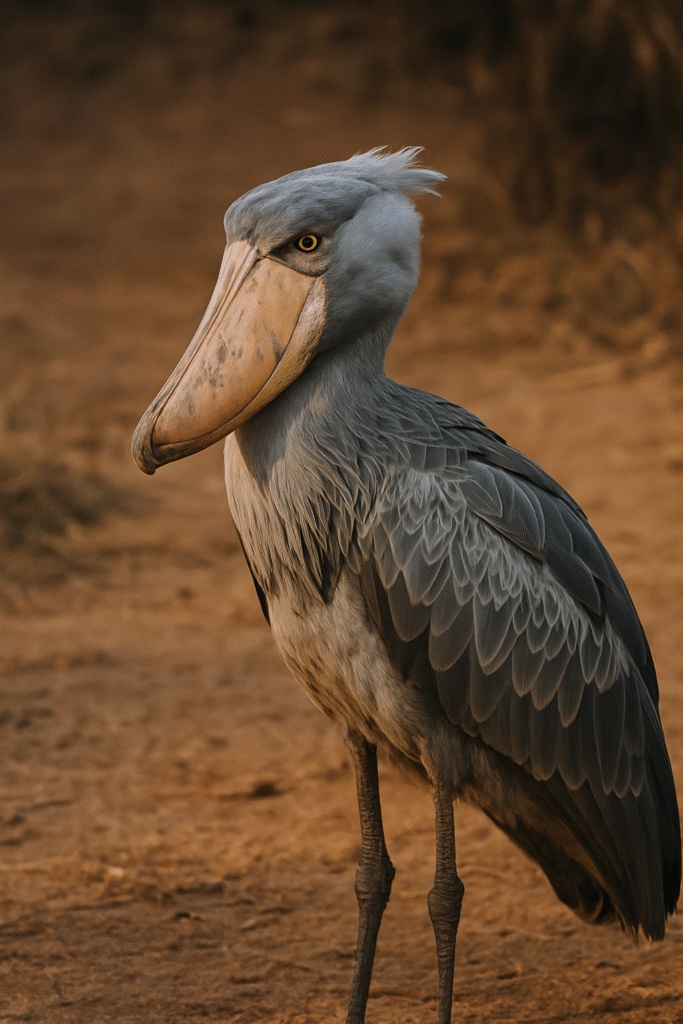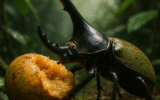In the marshlands of central Africa, where papyrus reeds rise like green fortresses and the air hangs heavy with the scent of still water, dwells a bird so strange, so otherworldly, that it has been called both prehistoric relic and divine omen. The Shoebill Stork—Balaeniceps rex—is a creature that seems torn from another epoch. With a frame as tall as a human and a beak shaped like a battle-worn shoe, it looms in the wetlands not as a bird, but as a presence.
To encounter a Shoebill is to confront silence itself. It does not sing, it does not chatter—it waits. Motionless for hours, it stands like a statue in the swamp, its gray plumage blending seamlessly with the haze of papyrus. And then, with a sudden, thunderous strike, it seizes its prey—lungfish, catfish, even young crocodiles—reminding us that patience, in the wild, is not virtue but survival.
A Creature Out of Time
The Shoebill has been described as a bird that escaped extinction, a direct descendant of creatures that ruled ancient wetlands long before humans recorded history. Its massive beak, ridged and hooked, recalls the jaws of dinosaurs more than the slender bills of modern birds. In its profile, scientists see echoes of the Cretaceous; in its stillness, observers feel the weight of ages pressing through.

Local folklore has long placed the Shoebill within the realm of spirits. Some Nile Basin communities revere it as a guardian of wetlands, a sentinel that watches over waters where hippos wallow and crocodiles slide unseen. To others, its unblinking stare is a warning—that the swamp is not a place to be taken lightly.
The Paradox of Power and Fragility
And yet, for all its majesty, the Shoebill teeters on the brink of disappearance. Fewer than 5,000 are thought to remain in the wild, their habitats shrinking as wetlands are drained, burned, or converted into farmland. Illegal wildlife trade has only compounded the threat: young Shoebills, so rare and enigmatic, can fetch tens of thousands of dollars on the black market.
Thus, the bird that appears invincible—capable of staring down crocodiles and lunging at prey with the force of a spear—finds itself vulnerable, not to nature, but to us. It is a paradox written in feathers: ancient strength undone by modern fragility.
Witness to Stillness
To watch a Shoebill in its element is to be reminded of what wildness truly means. Unlike the restless flocks of herons or the elegant flapping of cranes, the Shoebill rules with patience. It waits not seconds, but hours, sometimes days, for the precise moment to strike.

This stillness unsettles us. In a world driven by urgency and noise, the Shoebill offers no performance, no song. It simply exists. And in that existence lies a lesson—a mirror to our own restless nature. The bird seems to ask: can you endure silence long enough to notice what moves beneath the surface?
The Legacy of a Living Relic
The Shoebill is not just a bird. It is a reminder that the world still holds mysteries older than our civilizations, beings that defy neat categorization as predator or myth. To stand before one is to feel history not as a story in books, but as a living force—beating through feathers, gleaming in eyes that have watched centuries slip by like passing clouds.

If the colossal serpent effigy carved in stone whispers of humanity’s ancient fears, the Shoebill speaks of endurance, of survival against time itself. Both compel us to listen—to myth, to silence, to the fragile threads that bind the present to the deep past.
And as conservationists race to protect its dwindling wetlands, the Shoebill stands tall in the reeds, neither pleading nor protesting. It does what it has always done: waits. Watching. Surviving. A monarch of the marsh, as inscrutable as time.


Reply